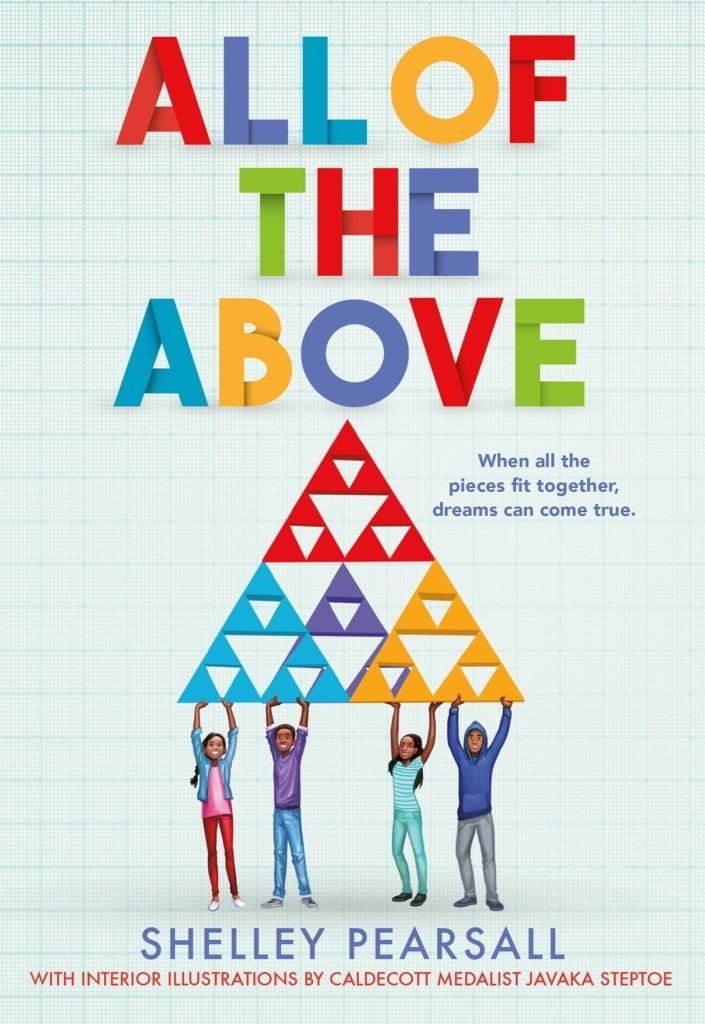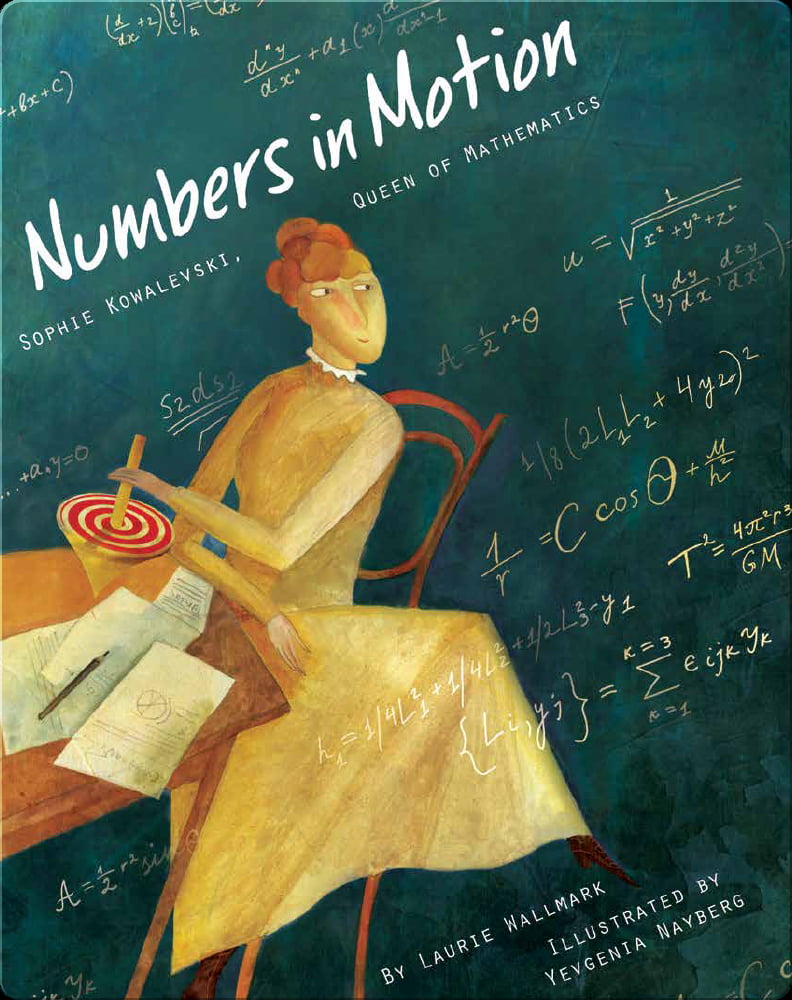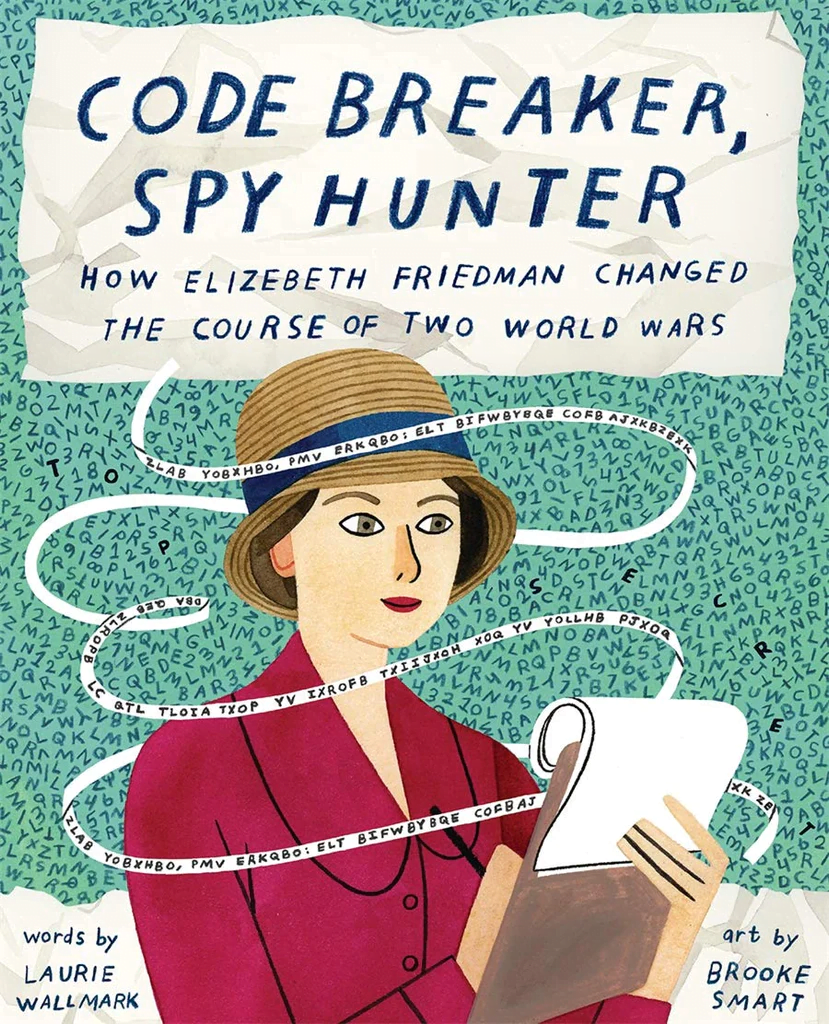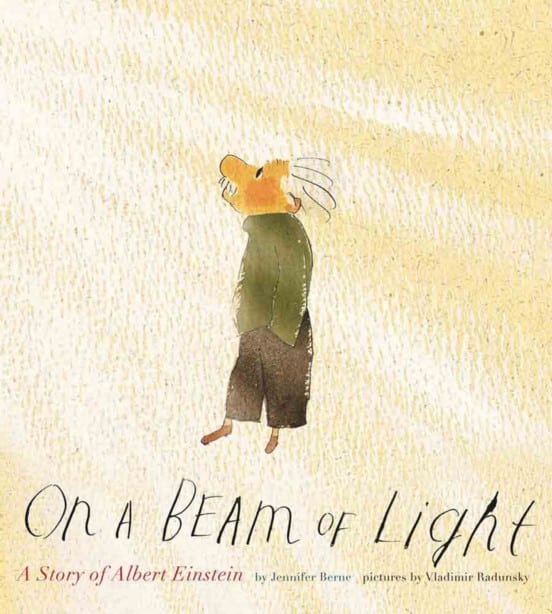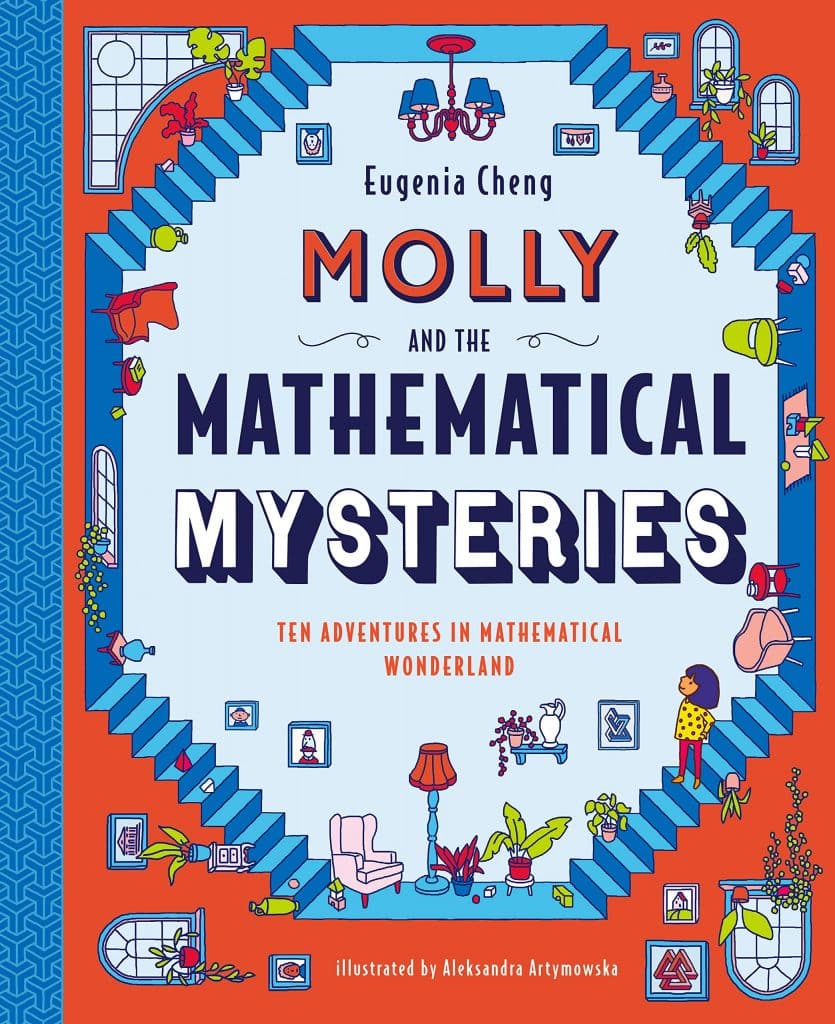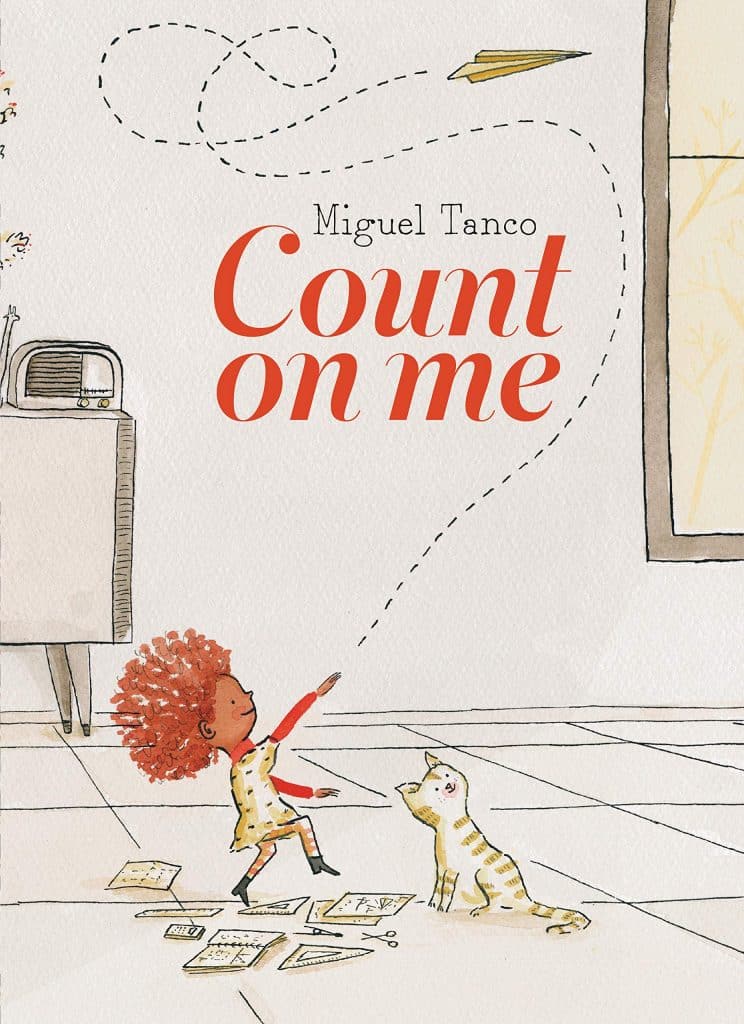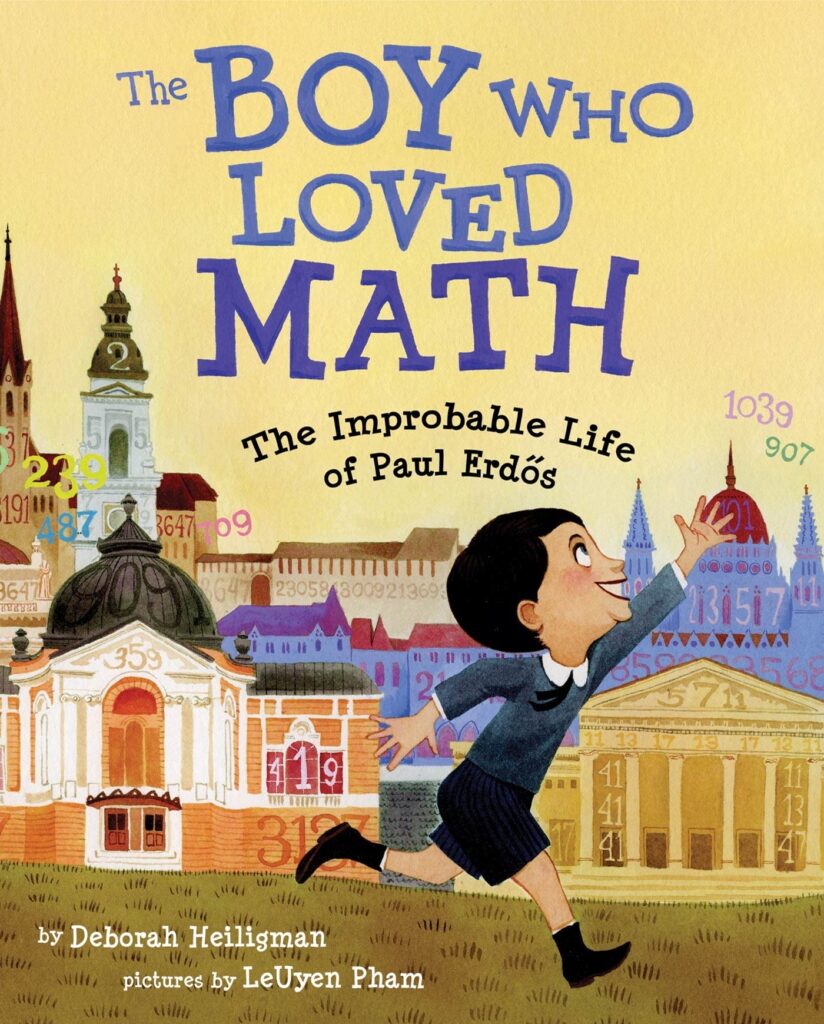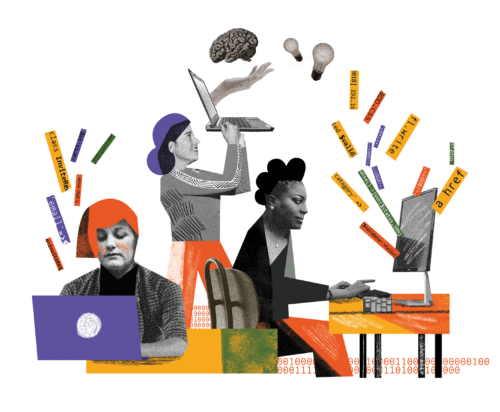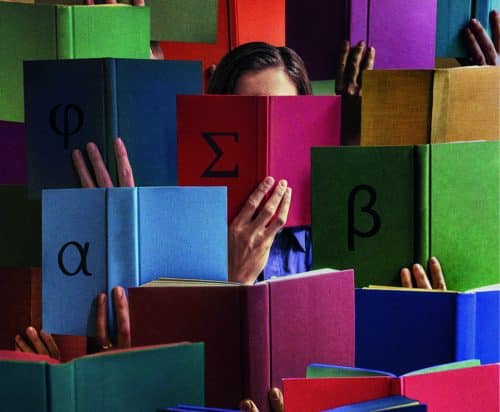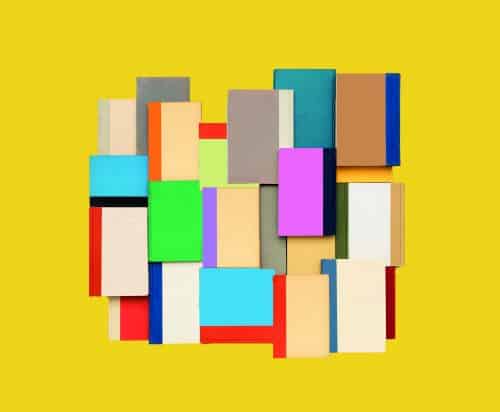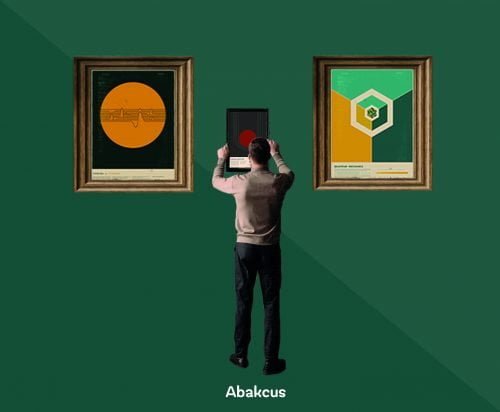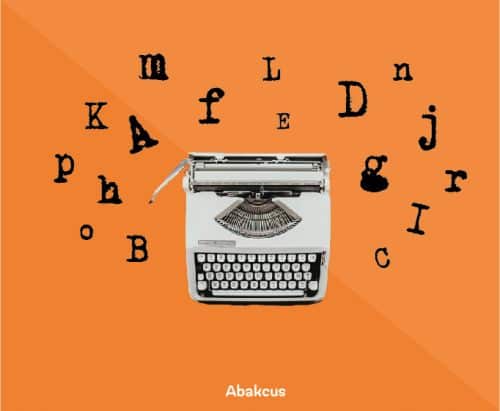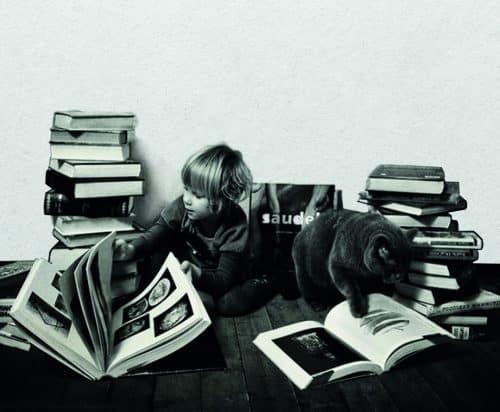As a parent, one of the greatest gifts you can give your child is a solid foundation in math. It’s more than just numbers and equations; it’s a universal language that unlocks a world of critical thinking, problem-solving, and even creativity. That’s why children’s math books are an absolute must-have in your home library. In this blog post, I’ll share with you my top picks for children’s math books that are not only educational but also engaging and entertaining. These books are designed to spark a love of math in your little ones, making learning feel like a fun adventure rather than a chore. So, let’s dive in and discover the magic of math together!
Being a child is a phase of life characterized by growth, discovery, and unbridled curiosity. It’s a time of learning, both academically and socially, where experiences are fresh, and the world is a wonder to explore. Children possess the unique ability to live in the moment, finding joy in the simplest of things. Despite challenges and obstacles, childhood often represents an era of innocence and freedom, setting the foundation for the individual’s future identity and worldview.
Indeed, the power of a child’s brain is immeasurable. Akin to a sponge, it readily absorbs information from the environment, constantly learning, adapting, and creating neural networks. Every child, given the right opportunity, nurturing environment, and stimulation, has the potential to become the main character in their own extraordinary intellectual feats, reminiscent of geniuses like the mathematical magician, Albert Einstein.
It’s our responsibility as parents, educators, and society to recognize and cultivate this potential, to inspire a future generation of thinkers, innovators, and leaders in their daily life. One educator who has made significant contributions to this field is Greg Tang, whose innovative approach to teaching math has helped countless students develop a love for the subject.
A Child’s Math Journey
As an educator and father of two little kids, I always believed that the journey into mathematics for a child should commence at an early stage. Mathematics, often perceived as an abstract and challenging subject, can be made enjoyable and relatable for children through playful, everyday experiences. Jon Scieszka, the author of “Math Curse,” is a great example of how math can be made fun and engaging for kids through storytelling. Another great resource for children is “Anno’s Counting Book,” which uses beautiful illustrations to teach counting and basic math concepts, including the use of the Anno’s counting book.
Counting toys, comparing shapes, or understanding the concept of time, all lay the foundation for a child’s numerical literacy in different ways. Early exposure to math not only enhances problem-solving and logical reasoning abilities, but also instills a strong number sense, nurturing a generation that is comfortable and confident with numbers. It’s crucial to remember that math is not about rote learning, but understanding concepts, finding patterns, and making connections – a journey that begins right from one’s childhood. Understanding these concepts will help children to take the rooster’s off and become confident in their mathematical abilities.
It’s absolutely astounding to witness a child’s memory retention capabilities, especially when it comes to older kids. They are capable of recollecting events or details from years ago, surprising us with their vivid recollections. This remarkable ability is not just limited to remembering family trips or birthdays, but can also extend to learning experiences. This is particularly useful when it comes to mathematics.
If a child can recall and build upon their mathematical encounters from years ago, it can lead to a deeper, more comprehensive understanding of the subject. This powerful tool of memory can thus be harnessed to further enhance a child’s mathematical journey, making the learning process interesting, engaging, and impactful. David Adler, a renowned mathematician, has written extensively on the subject of mathematical education for children and is a valuable resource for parents and educators alike. Cindy Neuschwander, another expert in the field, has also contributed significantly to the development of mathematical education for children.
Why is Number Sense Important in Early Learning?
Number sense and math skills, including the use of math picture books, are key components in early learning due to several significant reasons. It refers to a child’s ability to understand large numbers and their relationships, enabling them to perform basic arithmetic operations, estimate quantities, and discern patterns. Developing a strong number sense and math skills during the early years of a child’s life is akin to laying a solid foundation for a house. Without this bedrock, advanced mathematical concepts become challenging to comprehend and apply.
Moreover, number sense plays an integral role in everyday life, helping children understand the world around them in a more structured and logical manner. It aids in tasks such as telling time, baking, shopping, or planning a schedule.
Lastly, a strong number sense can contribute to a child’s academic confidence, especially in young children. When children understand numbers and their applications, they can engage in classroom activities with greater self-assuredness, fostering an overall positive attitude towards learning. This can lead to improved academic performance, not just in mathematics, but across all subjects.
Understanding the properties of basic shapes, such as the rectangle, can also contribute to a child’s number sense and overall academic success. One way to help children understand shapes and their properties is through the use of books like “Sir Cumference and the First Round Table,” which introduces geometry concepts in a fun and engaging way, authored by April Pulley Sayre.
Therefore, cultivating number sense in early learning, including in Kindergarten and third grade, is not merely about teaching children to count, add, or subtract. It’s about shaping confident learners who can navigate the world with a logical and analytical mindset.
Pattern Recognition and Sorting in Math
Pattern recognition is another fundamental skill in a child’s mathematical journey. It involves identifying recurring sequences or trends and predicting what comes next. This skill is not only crucial in mathematics, but it also plays a significant role in understanding the world around us. From predicting the changing seasons to understanding the rhythm of a song, pattern recognition is everywhere, even in the behavior of pigeons who are known to solve simple riddles. One great example of a children’s book that teaches pattern recognition is “The Greedy Triangle” by Marilyn Burns, which was praised by the poet and playwright Eve Merriam.
In the context of mathematics, pattern recognition aids in understanding number sequences, geometry, and even algebra at a later stage. Sorting, on the other hand, is a child’s first step into the world of data management. It involves grouping objects based on certain attributes like shape, size, color, etc. This seemingly simple task helps children understand similarities and differences, organize information logically, and make informed decisions.
Mouse Count, a popular children’s book by Mitsumasa Anno, is a great way to introduce sorting and counting to young children. Pythagoras, the ancient Greek mathematician, was known for his contributions to geometry and the Pythagorean theorem, which involves the relationship between the sides of a right triangle and is still widely used today. Crocodiles, which are known for their sharp teeth and powerful jaws, are also fascinating creatures that can be studied using mathematical concepts.
Therefore, incorporating activities that promote pattern recognition and sorting in a child’s everyday routine can have a profound impact on their mathematical abilities. Games, puzzles, and picture books are excellent tools to achieve this.
In the following sections, I will be highlighting some of the best children’s math books that make learning these concepts fun and enjoyable, even if they are as small as a grain of rice. These concepts include decimals.
Problem-Solving Skills through Math Books
One of the most invaluable skills that children’s math books can cultivate is problem-solving. The interactive exercises and puzzles presented in these books challenge young minds to think critically and come up with solutions. These activities often require kids to use their understanding of numbers, shapes, and patterns in innovative ways, thereby enhancing their ability to approach problems with analytical thinking.
As they work through each problem, not only do they become more adept at math, but they also develop resilience and determination in the face of challenges, such as identifying black dots in a pattern or fish eyes. This ability to tackle problems does not just aid in mathematical learning, it also significantly contributes to their overall intellectual and personal growth, including the popular children’s book “Grandfather Tang’s Story” which incorporates problem-solving skills in its storyline.
But what is the best way to spark a love of math in kids?
Math Books Are the Right Apparatuses to Start A Child’s Math Journey
Indeed, children’s math books are the quintessential apparatus to start a child’s math journey. Illustrated with colorful, engaging images and filled with relatable scenarios, they effortlessly merge fun and learning in a fun way. Many math books for kids often incorporate enjoyable elements like puzzles, games, and stories, such as a fun story by Steven Kellogg, to explain mathematical concepts, making the subject less intimidating and more interesting for young minds. A fun book can be a great way to introduce math to children and help them develop a love for the subject.
They nurture curiosity, encourage exploration, and stimulate logical thinking, all while teaching the fundamentals of numbers, shapes, and patterns. Most importantly, these books are designed to make the child the protagonist of their learning journey, fostering a sense of accomplishment and fostering a love for math and animal friends.
What are the Best Children’s Math Books?
Below, I have curated a list of my top 15 favorite children’s math books. Each of these children’s math books is a vibrant splash of color, fun, and learning that’s sure to make your child’s mathematical journey an exciting adventure. So, without further ado, let’s dive into this colorful world and discover the joy of learning math through these delightful children’s math books.

All of the Above is an exciting story about four kids who live in a poor neighborhood and attend Washington Middle School. Meet Rhondell, Sharice, Marcel, and James Harrris III – a unique group with different personalities and aspirations.
James, however, despises school, especially math class. When their math teacher, Mr. Collins, feels unappreciated by his students, he comes up with a brilliant idea to engage them – building the world’s largest tetrahedron. Rhondell and Sharice, two bright and ambitious girls, join the project. Meanwhile, Marcel, the funny guy who works at his dad’s barbecue joint, also jumps on board. Unfortunately, James, who has detention, is forced to stay behind on the first day.
As the months pass, the club diligently builds tiny tetrahedrons for their grand project. Everything seems to be going well until a devastating incident occurs. Sharice accidentally leaves the math room door open, allowing an intruder to vandalize their hard work. The club is heartbroken, and their unity crumbles. But James refuses to give up. He becomes determined to reunite the club and rebuild their beloved tetrahedron. Will they succeed?
Shelley Pearsall masterfully brings each character to life in this captivating book. Switching between their unique perspectives, she creates an engaging and rich narrative. I wholeheartedly rate All of the Above a 5 out of 5 because it kept me hooked from start to finish. I highly recommend All of the Above to anyone in 6th grade or older. Trust me, you’ll love it too!
In Numbers in Motion, you will discover the incredible life of Sophie Kowalevski, the trailblazing mathematician who defied expectations and became a true pioneer.
In this captivating biography, readers are transported to a world where women were underestimated and counted out. Against all odds, Sophie Kowalevski rose above societal limitations and shattered the glass ceiling in the field of mathematics.
Through beautifully illustrated pages filled with fascinating equations and an engaging narrative, Sophie’s remarkable journey unfolds. From her early fascination with math to her determination to overcome gender barriers, readers will be inspired by her unwavering passion and relentless pursuit of knowledge.
Follow Sophie as she navigates a world that doubted her abilities, from her humble beginnings in Russia to her groundbreaking studies in Germany. Witness her struggles, triumphs, and the countless awards she received.
Numbers in Motion is an empowering story and perfect choice for explorers, historians, and scientists alike. Delve into the life of Sophie Kowalevski and let her extraordinary legacy inspire you. Numbers in Motion is a must-read picture book biography for ages 7-10.
Code Breaker, Spy Hunter by Laurie Wallmark is a picture book biography that young readers will not be able to put down. It tells the fascinating story of Elizebeth Friedman, a little-known code breaker who made a huge impact in the early days of US cryptology. From taking down notorious gangsters to breaking Nazi spy codes, this remarkable woman’s work undoubtedly saved thousands of lives. What sets this biography apart is the inclusion of engaging back matter that explains codes and ciphers, provides further information on cryptology, a bibliography, a timeline of Elizebeth’s life, and even secret messages for young readers to decode.
“Code Breaker, Spy Hunter: How Elizebeth Friedman Changed the Course of Two World Wars” by Laurie Hallmark is an exciting and educational book perfect for young readers.
Born on August 26, 1892, Elizebeth Smith was a remarkable woman who defied societal expectations and made a significant impact during two world wars. Despite her father’s initial disapproval, Elizebeth pursued a college education in English literature, even borrowing the tuition from him.
After graduating, Elizebeth landed a job at Riverbank Laboratories in 1916, where she became involved in a project focused on encrypted messages in Shakespeare’s works. During World War I, she and her husband, William F. Friedman, worked as cryptanalysts for the U.S. War Department, decoding secret messages and helping to win the war.
In the 1920s, Elizebeth and her husband moved on to decode communication from liquor smugglers during Prohibition, successfully catching numerous criminals. When World War II broke out, Elizebeth joined a code-breaking unit for the Office of Strategic Services, making important contributions to the war effort.
Elizebeth’s extraordinary work remained classified until 2015, and she is now recognized as one of the most gifted and influential code breakers in history. This captivating book reveals the untold story of a true heroine and will inspire young readers to pursue their passions and break barriers.
With beautiful illustrations and engaging explanations of coding, “Code Breaker, Spy Hunter” is a must-read for children aged six and up. It includes an insightful section on codes and ciphers, as well as a fun exercise to crack codes. Join Elizebeth on her remarkable journey and discover how one person can make a difference and change the world.
In the bustling literary world, children’s picture books often craft the tales of imagination, wonder, and the power of discovery. “On a Beam of Light” by Jennifer Berne, sweetly accompanied by Vladimir Radunsky’s artwork, sidesteps the average storybook and dives deep into the past of one of the world’s most renowned geniuses, Albert Einstein, to reveal that every journey of discovery has humble beginnings. The narrative teaches young minds and reminds adults that it is not just knowledge but questions and uninhibited curiosity that drive real understanding.
“In the year that Einstein was born, 1879, the electric light bulb was not yet a household item. Cars and airplanes were still just a dream, and the atoms that we are all made of were a mystery.” This captivating introduction invites readers into a world on the brink of unimaginable innovation, with a baby Einstein poised to contribute his share of the stars. It continues to narrate a most curious child, silent with strangers, yet bubbling with an inner universe of thoughts. His first encounter with a compass underlines the essence of his life’s work—understanding those invisible forces that guide our world.
Einstein’s fascination with the compass leads him to question the source of the needle’s unwavering direction. In his mind’s eye, he is already on a beam of light, racing alongside these invisible rays to understand the Sun’s secrets. It’s a testament to the book‘s ability to capture the essence of childhood curiosity—an open heart to the world’s marvels.
The Poetry of Numbers and Silenced Curiosity
Entering school, Einstein is confronted with authority that does not appreciate the depths of his inquiries. He is told to follow the curriculum and relinquish his persistent questioning. Yet, as “On a Beam of Light” illustrates, the young Einstein refuses to be molded into someone he is not, much like the particles he’d one day study—always in motion and unstoppable.
Despite being labelled slow and simple-minded by teachers, Einstein’s love affair with numbers becomes his solace. He unravels the poetry within their patterns, foreseeing the lyrical beauty in their logic—another thematic magnification of the book‘s core message: the importance of looking beneath the surface, questioning and listening to one’s inner voice.
The Solitude of Brilliance
Einstein’s journey to his general theory of relativity was a solitary one. After he leaves school and at odds with traditional academics, he finds work at a patent office, a seemingly mundane role. Yet, it is this solitude that nurtures the brilliance behind Einstein’s most revolutionary thoughts. His mind becomes a kaleidoscope of hypothetical scenarios, all due to that one moment with a compass in his hand.
The book portrays this time in his life with nuance, illustrating that sometimes stepping out of the limelight can be the spark we need to ignite real innovation. Radunsky’s illustrations accompany the narrative beautifully, allowing the reader to almost overhear the synaptic crackling that indicates another grand idea is in formation.
Einstein’s True Measure: The Unanswered Questions
While “On a Beam of Light” ends almost poetically with the acknowledgment of Einstein’s death, it does so with an important but subtle message. His true measure, perhaps, is not in the theories he exhaled into the world but in the questions he left for future minds. Einstein bequeathed us with intellectual puzzles to unravel, trails of light to continue chasing, and a mantle of curiosity to carry forward.
This final narrative embellishment not only honors Einstein’s legacy but it prompts the reader. Each of us holds the potential to craft our story and leave an indelible mark in the grand narrative of knowledge. “On a Beam of Light” is a celebration of a life lived intensely and questions asked fearlessly.
Fostering Young Minds: A Path to Einstein’s Story
The value of “On a Beam of Light” extends beyond its eloquent retelling of Einstein’s early life. It encapsulates a lesson vital for educators and parents—to foster an environment that encourages inquiry and honors the unique path of each child’s intellect. Its pages resonate with the inner child in every adult, calling them to remember the awe of a first discovery or the satisfaction of an answered “why.”
The illustrations, too, play a pivotal role on this journey. They are more than mere visual companions—they are guides through the labyrinth of Einstein’s mind. A playful mix of wit and art, they underscore the idea that insights and inspiration can come from the most unexpected places.
For educators, “On a Beam of Light” is a resource not only for storytelling but for planting the seeds of perseverance and the drive for understanding. And for parents, it is a subtle reminder that in a child’s laughter or in a seemingly simple question might reside the future’s solutions.
Diving into the Cosmic Pool of Curiosity
In a world that often prizes answers, “On a Beam of Light” encourages the celebration of the question. It teaches children that in the very act of wondering lies the key to unlocking life’s greatest mysteries. It implores educators to cultivate not only a generation of knowledge bearers but a clan of undeterred thinkers.
Berne’s narrative expertise and Radunsky’s tender illustrations are in perfect harmony, their voices joining in a crescendo that resonates with the sound of a child’s laughter in the hallways of academia. Together, they deliver a tale that’s as much an instruction manual for the curious mind as it is a love letter to the future. And just like the man himself, the book embodies the spirit that true intelligence does not reside in knowing everything but in realizing there is everything to know.
Conclusion: “On a Beam of Light” as an Ongoing Narrative
Reading “On a Beam of Light” is not a passive activity. It is an adventure—pacing the floors of an intellectual home, turning the pages of history that not just document moments but transcend them into legends. It brims with life lessons; not the pedantic kind but the sort that whispers in one’s ear, giving every person who encounters it the courage to light up their own path.
As the last page turns, an enlightened phrase hangs in the air: “Learn from yesterday, live for today, hope for tomorrow. The most important thing is not to stop questioning.” In the universe, the echoed laughter of a boy who dared to ponder without bounds still reverberates.
Educators and parents, take note: “On a Beam of Light” is not just a story of a past shining luminary but a lantern guiding the way for the curious minds of the future. It is a testament to every child who ever wondered and a celebration of those who decided to pursue the unknown.
Ultimately, “On a Beam of Light” transcends the narrative of Albert Einstein’s childhood into a universal anthem for the lively spirit that resides within all children and, when nurtured, can light the most incredible journeys.
Don’t you just love it when a good story intertwines with your passion, driving you to explore the intertwining paths of creativity and knowledge? If you are a fan of mathematical fiction and yearn for a narrative that makes the world of math not only accessible but whimsical, you’ll be thrilled by Eugenia Cheng’s “Molly and the Mathematical Mystery.”
In a world where numbers breathe, dance, and hide in plain sight, Cheng’s book, Molly and the Mathematical Mystery takes young adult readers on a joyous journey through the puzzles of prime numbers, the labyrinths of logic, and the interconnected threads of shapes. But it isn’t just a simple math lesson in the disguise of a story; it’s a gripping narrative that highlights the beauty and allure of mathematics.
A Math-Infused Tale: What Is “Molly and the Mathematical Mystery” All About?
At its heart, “Molly and the Mathematical Mystery” is a celebration of math, disguised as an adventure for its young and curious readers. The book centers on Molly, a young girl who moves to a new town and school, feeling isolated and different. However, her encounter with a hidden and mysterious library sets her on a quest to prove herself and unravel secrets that could change everything.
Molly doesn’t possess supernatural powers or high-tech gadgets. Her tool is her intellect, her courage, and her love for math. As she navigates the challenges within the book, Molly finds kindred spirits—fellow students and even historical mathematical figures—who guide her through puzzles and assist in her pursuit of understanding.
Cheng’s book, Molly and the Mathematical Mystery, is much more than a coming-of-age story. It’s a depiction of the math that lurks behind our world and an affirmation that math can be thrilling.
Making Math Fun and Accessible
The greatest triumph of “Molly and the Mathematical Mystery” lies in its ability to make math enjoyable, even for those who shy away from the subject. Cheng gracefully weaves topics like the Sieve of Eratosthenes or the Enigma machine into the plot, taking care to ensure they serve the storytelling rather than stifle it with hard facts.
Through engaging characters and an immersive narrative, Molly and the Mathematical Mystery imparts knowledge about numbers and reasoning structures that are both fundamental and, dare we say, fun. It’s clear that Cheng, a renowned mathematician in her own right, is not interested in simply parading her expertise. Instead, she chooses to share the joy she finds in her field, and passes this energy on to her readers with ease.
A key takeaway is the democratization of mathematics. Cheng believes that everyone can—and should—engage with mathematical thinking. Her book speaks to this belief, fostering an environment where every reader can be a solver and every problem is just another riddle waiting to be tackled.
Demystifying Math: Less Intimidation, More Exploration
Mathematics often carries a reputation of being daunting, a subject that weeds out the weak-minded. “Molly and the Mathematical Mystery” actively challenges this notion, illustrating that understanding numbers is more about approach and perspective than inherent ability.
Cheng’s characters—both human and numerical—emphasize that the way you look at a problem can be more important than the right answer itself. They engage in guesswork, creative strategies, and reformulate their inquiries when a roadblock appears, echoing insights of the mathematical process in a palatable and relatable way.
For most young readers, Molly and the Mathematical Mystery poses a powerful argument: mathematics can be an adventure to be relished rather than a chore to be endured. Each challenge Molly faces is another opportunity for growth and learning, inviting readers to adopt a similar mindset in their own encounters with the subject.
Embracing Problem-Solving as an Adventure
Molly and the Mathematical Mystery infuses a sense of excitement around the very act of problem-solving. Each new equation or puzzle isn’t just another academic exercise; it’s a gateway to a wider understanding and new adventures. “Molly and the Mathematical Mystery” teaches its readers that, through tackling problems, one can unlock doors to worlds both real and imaginary.
Moreover, the narrative encourages the reader to perceive the world through mathematical lenses, sharpening their ability to recognize the patterns and connections that govern our environment. Cheng illustrates that the beauty of math is all around us and that, with the right approach, we can convert any challenge into an opportunity for discovery.
The Perfect Blend: Storytelling, Illustration, and Design
The design of the book is as intentional as its content, with illustrations and layouts that complement the narrative and help immerse the reader in the world of numbers. Visual learners and young audiences are especially well-catered for, with diagrams and visual aids that not only clarify but also add depth to the storytelling experience.
The illustrations serve as a bridge, capturing the essence of geometric shapes or the logic of puzzles, enhancing the understanding of the text. They are neither unnecessary nor overpowering but perfectly balanced, adding to the charm of the story without burdening it with unnecessary weight.
A Conclusion Grounded in Adventure and Wisdom
In a world flooded with technology and fast-paced media, an old library and a mathematical mystery offer refreshing deviation. “Molly and the Mathematical Mystery” is more than just a story—it’s an invitation to pause, to think, and to accept the treasures and challenges that the subject of mathematics presents.
Cheng’s writing style is approachable and charming, engaging the reader in such a way that concepts, which once may have seemed dry or distant, spring to life with color and adventure. It stands as a testimonial to the possibilities when we allow creativity to guide our approach to areas traditionally viewed as mundane.
In the end, Molly and the Mathematical Mystery‘s greatest achievement is to instill in its readers a sense of optimism in the face of problems. It teaches that, in every mystery, there is a mathematical undercurrent—a set of principles at work, waiting to be uncovered.
For the young and the young at heart, “Molly and the Mathematical Mystery” champions a new generation of thinkers and problem-solvers—each one poised to take on the world with a smile, a head full of numbers, and the wisdom that an enigma is nothing to be feared but a joy to be encountered.
As we close the final chapter on Molly’s adventure, it’s hard not to feel that our own journey with mathematics has just begun—a journey filled with joy, anticipation, and, most importantly, endless possibility.
Eugenia Cheng’s work doesn’t merely introduce mathematical concepts; it acts as a catalyst for a love affair with logic and numbers. For any YA reader or adult looking to rediscover the enchantment of pure reasoning, this book stands as an unmissable read. So, are you ready to step into the shoes of Molly and venture into a world where the answers aren’t just numbers but threads in the tapestry of understanding?
In a literary world where numbers are often the villains of the imaginative, Miguel Tanco’s “Count on Me” turns the tables, transforming math into a hero. The story follows a young girl as she embarks on a journey to discover her passion and finds an unexpected ally in the world of numbers. From start to finish, Tanco weaves a heartwarming narrative that celebrates the beauty of math and the individual pursuit of excellence.
A Celebration of Everyday Mathematics
The true beauty of “Count on Me” lies in its ability to depict the subject of mathematics not as an abstract concept, but as a vital and engaging part of everyday life. For young readers, this message is paramount, especially for those who might not resonate with traditional tales. Tanco’s whimsical illustrations bring both the girl’s world and the mathematics she loves to life, inviting children to see the equations hidden within their routines and environments. It’s an invitation to appreciate the patterns, shapes, and numerical reasoning that underpin the very fabric of life.
Diversity and Representation
In addition to its numerical spotlight, “Count on Me” stands as a beacon for diversity in children‘s literature. The interracial family at the heart of the story presents a relatable and inclusive example for readers, showcasing the universality of familial love and support. Tanco thoughtfully incorporates diverse representation, offering a reflection of the multi-hued world in which young readers live. It’s a salient reminder that the fascination with numbers knows no bounds, respecting neither race nor gender.
Artwork That Speaks Volumes
The artwork of “Count on Me” is a marvel to behold. Tanco’s signature style is a testament to his skill and vision, displaying a rich and warm palette that complements the story’s hopeful tone. The inclusion of the main character’s illustrated notebook is not just a charming aesthetic choice but a practical and dynamic teaching tool. For children who are visually inclined, this section serves as an instruction manual for engaging with the numbers and concepts introduced in the book.
In conclusion, “Count on Me” may very well become a cherished addition to a child’s math library. It broadens the horizon of what is possible in children‘s literature by valuing the love of math and encouraging young readers to find and nurture their own passions. Any parent, educator, or young reader who appreciates a good story with valuable takeaways will delight in “Count on Me.” It is a book that counts, indeed.
As a treasure house for stories about remarkable individuals, Julie Mosca’s “The Girl With a Mind for Math: The Story of Raye Montague” stands out in its engaging portrayal of an unsung hero of STEM. This tale of perseverance not only educates but empowers young minds, bridging the gap in historical representation of pioneering women for the modern age. With captivating storytelling and delightful illustrations, it brings to life the journey of a determined woman who overcame societal barriers to revolutionize ship engineering.
At the heart of the story is Raye Montague, a young African-American girl who tours a German submarine and dares to dream of engineering. As her career takes her through a maze of racial and gender biases, her unwavering spirit shines through each page. The book handles themes of inclusivity and equality with grace, showing readers, especially young girls interested in math and science, that dreams are not bound by prejudice or perception.
The vibrant artwork by Laura Freeman captures the essence of Montague’s story, illustrating her ingenuity alongside the challenges she faced. The inclusion of a colorful timeline and a comprehensive biography at the end adds an educational layer, turning a simple story into a gateway for readers to learn more about the protagonist and the broader historical context.
As a reader with a passion for history and gender equality, I was moved by Montague’s journey. The author skilfully weaves a narrative that doesn’t shy away from the realities of discrimination but also uplifts with the message that resilience and talent can break through any barrier.
In conclusion, “The Girl With a Mind for Math” is not just a storybook; it’s a tool for transformation. Its candid approach, along with the wealth of educational content, cements its place on the bookshelf as a testament to the possibilities that open up when we challenge societal norms. It is a must-read for parents looking to inspire their children with important role models and for educators with a passion for broadening the horizons of young learners.
Young readers will undoubtedly find a hero in Raye Montague, and they might even be inspired to carve their own path in the world of mathematics and beyond. With this book, the author not only memorializes Montague’s legacy but also plants the seeds for a future generation of changemakers.
In a world where role models can shape our future, Hidden Figures: The American Dream and the Untold Story of the Black Women Who Helped Win the Space Race is a powerful beacon of inspiration. Margot Lee Shetterly’s captivating nonfiction masterpiece sheds light on the incredible achievements of African-American female mathematicians who transformed American space travel.
Step into the lives of Katherine Goble Johnson, Dorothy Vaughan, and Mary Jackson as they navigate a path from segregated computing offices to managerial and engineering roles within NASA. Spanning the impactful years from the 1940s to the 1980s, this book unveils the remarkable intersection of aeronautic innovation and space exploration. It not only captures the essence of America’s historic transformation during the 20th century, but also delves into complex issues such as international relations, segregation, and economic growth.
Through personal accounts, you’ll witness the challenges these trailblazers faced as they competed with their white colleagues and male counterparts. Beyond their professional achievements, their unwavering commitment to their communities is truly awe-inspiring. Margot Lee Shetterly’s writing is a masterful blend of thoughtful storytelling and well-researched facts, effortlessly weaving together interviews with these remarkable women. The emotion and depth that Hidden Figures captures far surpasses the Hollywood adaptation it inspired.
If you’re seeking an educational and illuminating read that explores the post-war Black working class of America, Hidden Figures is an exceptional choice. Prepare to be inspired by the resilience and tenacity of these “hidden figures” who have long been overlooked in history’s pages. Their stories serve as a beacon of hope and a reminder of the transformative power of perseverance.
“Lemonade in Winter: A Book About Two Kids Counting Money” by Emily Jenkins invites young readers on a heartwarming adventure tackling the trials and joys of entrepreneurship. Set on a chilly day, the tale recounts the delightful efforts of Pauline and John John, whose optimism shines through as they set up a lemonade stand in the midst of winter, fueled by a clever understanding of supply, demand, and counting money.
What stands out the most in “Lemonade in Winter” is the exquisite blend of didacticism and storytelling prowess. Emily Jenkins weaves a narrative that not only educates children about basic financial concepts but also values in tenacity and innovative thinking, as the siblings learn firsthand about customer preferences and marketing strategies.
In addition, the charming sepia-toned illustrations by G. Brian Karas bring this world to life, capturing the warmth and determination of Pauline’s lemonade venture against the cold backdrop. The visuals perfectly complement the text, offering a visual narrative that aligns beautifully with the written one.
Ultimately, “Lemonade in Winter” is a must-read for young ones learning about money and more. It’s a reminder that some of life’s most valuable lessons come from our experiences, even if they involve something as simple and sweet as selling lemonade on a snowy day. This delightful book infuses important life skills with a playful and endearing story, making it not only an educational tool but an enchanting piece of children‘s literature. Highly recommended for parents, educators, and young readers alike.
There’s something unequivocally charming about the way Deborah Heiligman introduces young readers—and those young at heart—to the compelling story of one of history’s most prolific mathematicians in The Boy Who Loved Math. It is no small feat to transform the biographical account of Paul Erdős, a mathematician, into an accessible and engaging children’s book. Yet, with Heiligman’s nimble craftsmanship and LeUyen Pham’s vibrant illustrations, the audience is drawn into a world where numbers dance and life is a series of fascinating equations.
Paul Erdős is not your typical historical figure—or mathematician, for that matter. Widely known for his eccentricities and an incredible body of work spanning hundreds of collaborative papers, Erdős is something of a legend in the math world. This book peels back the layers of his complex persona, revealing a man driven by passion and curiosity, his love for math trumping mundane life skills like buttering bread.
What captivates about The Boy Who Loved Math is not just the whimsical portrayal of Erdős’ peculiarities but also the underlying message that brilliance can take on many forms. Erdős’ unorthodox life is a testament to individuality and finding one’s own path in the world. He was a mathematical nomad, carrying his love for numbers across continents and sharing it generously through collaboration.
Heiligman’s text is a delightful mix of simplicity and depth, encapsulating complex ideas in a way that sparks interest without overwhelming the young reader. She has a gift for pinpointing moments of humanity within a subject that can often appear daunting or sterile to the uninitiated.
Meanwhile, Pham’s illustrations do more than animate Erdős’ story—they weave numbers and symbols seamlessly into the artwork, reinforcing the book’s theme that math is everywhere. The artwork is a rich canvas, portraying a vigilant attention to detail that mirrors the intricacies of Erdős’ own mind.
However, this book is more than just a chronicle of an exceptional life; it serves as a crucial reminder of the importance of nurturing unique talents and encouraging exploration. Erdős didn’t fit the mold, and yet, or perhaps consequently, he was able to carve out a niche that had profound implications for the field of mathematics.
In conclusion, The Boy Who Loved Math is an affectionate, spirited biography of Paul Erdős. It is an inspiring tale for children and adults alike, reminding us of the beauty lying in numbers and the pursuit of knowledge. Heiligman and Pham have crafted a loving tribute not just to a man, but to mathematics itself, inviting readers to question, explore, and maybe—just maybe—fall in love with math too.
What are 7 year olds learning in math?
At the age of seven, children are typically in Grade 2 and they are expanding their understanding of math beyond basics. They are building upon the number sense, pattern recognition, and problem-solving skills they’ve developed in earlier years. At this stage, children are learning to add and subtract two-digit and three-digit numbers, and are starting to understand the concept of multiplication and division.
They are also exploring more about fractions, particularly halves and quarters. In terms of geometry, seven-year-olds are learning to identify, describe, and compare different shapes and their attributes. They are also introduced to the concept of measurement, including length, weight, volume, and time. These concepts are taught using a variety of methods, including interactive activities, games, and math story books to make the learning process enjoyable and effective.
What helps kids learn math?
Several factors aid in children’s math learning. The first is a supportive learning environment, where children are encouraged to explore, make mistakes, and learn at their own pace. This cultivates a positive attitude towards math and reduces math anxiety.
Interactive and hands-on activities also play a crucial part in math learning. These can include math games, puzzles, or real-life applications of math, like cooking or shopping, that make learning engaging and meaningful.
Moreover, children’s math books are phenomenal tools that blend storytelling with mathAn error occurred during generation. Please try again or contact support if it continues.
At what age should a child know math?
Mathematical understanding begins to develop from a very early age. Children as young as two start exhibiting the ability to count and recognize numbers in their environment. Around the age of 3-4 years, kids typically start grasping the concept of addition and subtraction on a basic level, mainly through practical life experiences and play. By the age of 5-6, as they enter school, children become more comfortable with numbers and start learning more complex mathematical concepts like place values and simple fractions in an academic setting. So, in essence, a child’s math journey begins as early as their toddler years and continues to evolve through their academic life.
What math do 8 year olds learn?
By the age of eight, typically in Grade 3, children’s mathematical abilities are further refined and broadened. They continue to work on addition and subtraction, but now with larger numbers, up to thousands. Multiplication and division become a significant focus, including understanding of multiplication tables and applying them to solve problems.
They further delve into fractions, learning to compare and order them, and beginning to add and subtract simple fractions. In geometry, eight-year-olds start to investigate the properties of two-dimensional shapes and learn about perimeter. They also gain a deeper understanding of measurement concepts, including the measurement of time and money. Children’s math books continue to be valuable aids in teaching these concepts, making them more accessible and engaging for eight-year-olds.
How can I find out if a book is worth buying for my child?
Determining whether a book is worth buying for your child involves a few critical considerations. Firstly, assess the book’s relevance to your child’s age and their current level of mathematical understanding. The book should be challenging enough to stimulate their intellect but not so difficult that it overwhelms them. Secondly, look for reviews from other parents or educators who have used the book. Their insights can provide valuable information about the book’s effectiveness in teaching math concepts.
Thirdly, peruse the book yourself—does it make math fun and engaging? Is it visually appealing with colorful illustrations or diagrams? Does it incorporate stories or characters that your child can relate to? Lastly, consider the children’s math book’s longevity. A good book will not just be beneficial for immediate learning but also serve as a resource that your child can return to for reinforcement or advanced learning.
What makes good children’s math books better than others?
Good children’s math books adhere to a few key principles that set them apart from others. Firstly, they embed mathematical principles into compelling stories that captivate children’s interest and imagination. This story-based approach makes abstract math concepts more concrete and relatable for children.
Secondly, they are visually appealing, utilizing vibrant colors, engaging illustrations, and easy-to-read text. Thirdly, they provide interactive elements, such as puzzles, exercises, or real-life examples, which encourage active learning and help children see the practical applications of math. Lastly, exceptional children’s math books are age-appropriate, aligning with the child’s cognitive development and mathematical understanding. They gradually increase in complexity, offering consistent challenges that encourage progress while ensuring the child never feels overwhelmed.


